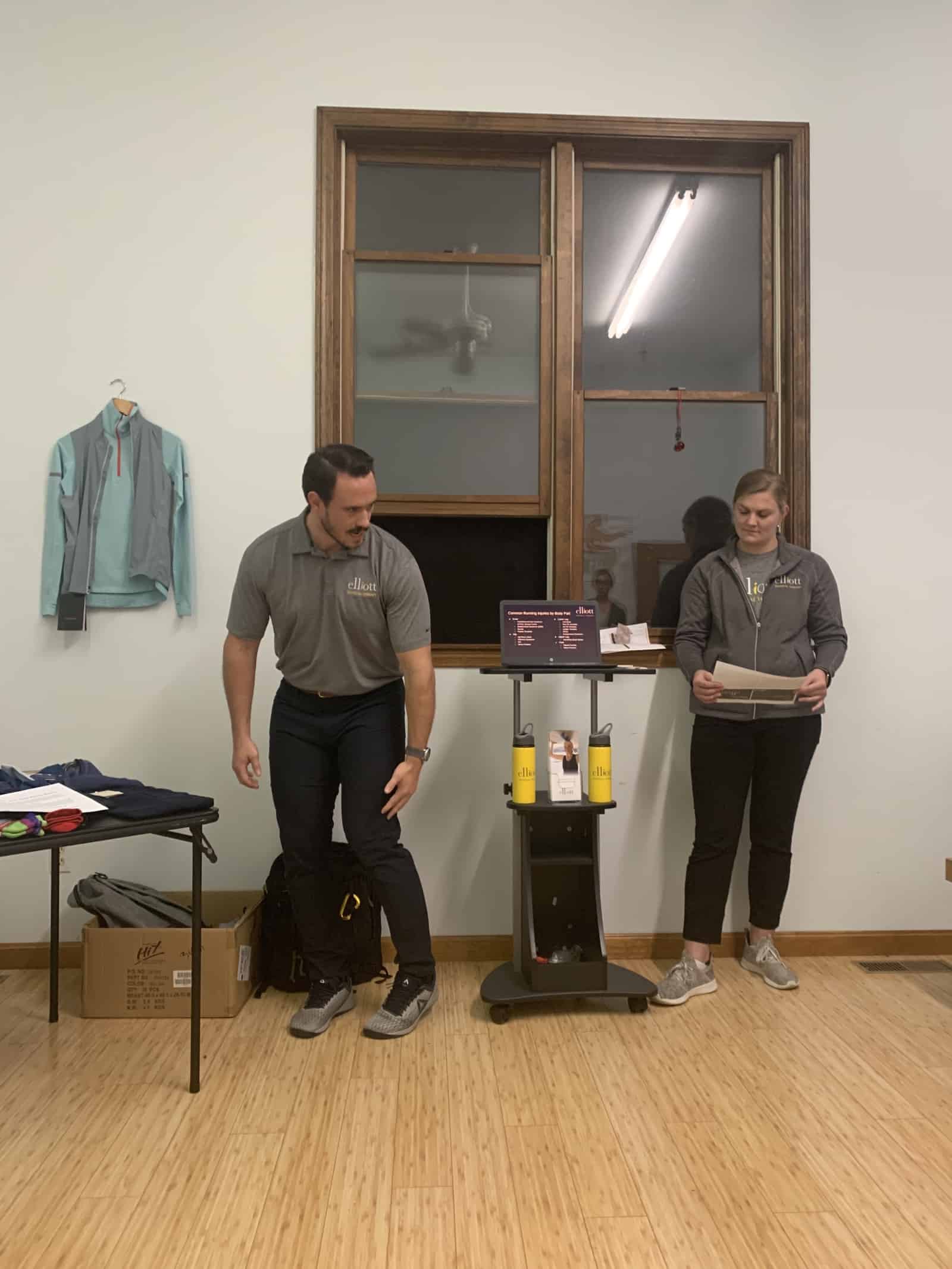
Transition to Winter Running
Intro by Cindy Doody and Expert Article by Mike Ricciardi, DPT, FAFS, CSCS
Last Month we decided to invite some experts on winter running and recovery to Body Blueprint. We had the pleasure of meeting Dr Zach & Dr Jackie from Elliott Physical Therapy and welcome them as our new business partner. New to the area, Elliott PT is located at 211 Anchor Plaza/3A, Hingham. Patti Elliott and her husband Darryl own Elliott PT, and they have 4 other locations, Hingham being the newest. I thought since we at Body Blueprint are beginning to see runners come in for sports massages and recovery sessions that it was time to get these guys in to give us a few pointers on winter running.
During that event, we also had our friend and neighbor Traci Cameron who owns Outside In (OSI) in Cohasset Center give us her expert advice on what to wear and what to bring during outdoor winter activities. Traci’s recommendations:
1) Merino Wool-Because it is light and great for layering, which is key, and it draws moisture away from the body
2) Invest in good gloves, hat and wool socks- Three extremities of the body that lose heat the quickest. Running Mittens keep your hands warmer if you are going for a long run.
3) Stay hydrated-Nuun Tablets or Bloks are the best because they have the correct amounts of electrolytes that are depleted while running. Water sometimes isn’t the best on long cold runs. These can help you from cramping.
Our guests were also able to try two recovery drinks. Two of my personal favorites not only for their taste, but because its fast and easy, especially when you want to get to the gym in the morning!
1) Hale Bone Broth – This bone broth stands apart from its competition because of the taste in my opinion, not only is it made with love, but the healing qualities are endless.
2) Blendah Babes (a CK community wellness partner, too!)- “From frozen to your door”, or I should say into my blender. Amazing, fresh, and easy. Only way my teenage son gets his fruits and vegetables!!
So, we had a wonderful night of educating our guests with Tips & Tricks into Transitioning into Winter Running, but I will also add this article that dives a little deeper on the subject from Mike Riccardi, DPT, FAFS, CSCS of Elliott PT as our expert guest writer.
Thoughts of running in the cold can be daunting and there are only two main options for runners looking to continue putting on the miles: treadmills or face the cold. Most runners groan at the thought of running on a treadmill, particularly when it comes to longer training runs. That leaves outdoor running as the better option for many and luckily there are ways to continue to get your miles in as you train through the winter.
Warm-Up Before the Run
While you should be doing some sort of dynamic and active warm-up before any run, what you do before lacing up your shoes on a cold day is especially important. Cold temps restrict blood flow to your extremities which can lead to an increased chance of injury. Focus on dynamic quad, hip flexor, calf, and hamstring stretches pre run to improve blood flow. Foam rolling can also be used pre-run to improve circulation.
Dress in Layers
Two things should determine what you’re wearing for your run: temperature and distance. Obviously, the colder it is, the more layers you need, and the shorter your planning to be outside, the more you need on as well. That may sound counter-intuitive but remember that as you run your body will warm-up and you run the risk of over-dressing. The general rule of thumb is to add about 15° to the outside temp and that is what it will feel like to you. For a shorter run maybe add 10° and longer runs add closer to 20°.
Running gear that everyone should have available for colder days include running pants/tights, thicker running socks, long sleeve (thin) tech shirt, looser long sleeve shirt to wear over thin shirt on really cold days, running gloves, wind-proof jacket, hat.
Indoor Running
If you do choose to run indoors then you can either run on a treadmill or an indoor track. If you’re choosing a treadmill then more power to you. My only advice would be to get a tablet, boot up Netflix, and try not to go crazy. Indoor tracks are smaller than the traditional ¼ mile tracks outside which means that to run the same distance you’ll end up doing way more laps and way more right turns.
One useful tip is to figure out how far you plan on going, calculate how many laps that will be and do half one direction and half the other. Ideally, you should try to switch directions periodically throughout the run instead of once halfway through. For example, if you’re running 20 laps then change directions every 5 laps.
Next, while I think runners should ALWAYS be doing some sort of cross-training to help improve performance and decrease the chance of injury, the winter is the perfect time to really buckle down and get into some strengthening.
I recommend functional strengthening exercises be done at least twice per week with a focus on the major running muscles including the hamstrings, glutes, quads, and calves. Think of exercises that mimic running in some way, ie. standing, ideally on one leg. Examples include squats, single leg squats, single leg deadlifts, and lunges. Try making them more 3-dimensional by incorporating different angles and foot positions as well!
Lastly, getting in to see a skilled physical therapist that is trained in performing detailed running gait assessments and who can educate you on your specific running form, risk of injury, and appropriate exercises to stay healthy/improve performance can be critical to your success as a runner. Elliott Physical Therapy welcomes runners of all ability levels to call or stop by our new Hingham location within 211 Anchor Plaza on Route 3A for a free running assessment.










Leave A Comment